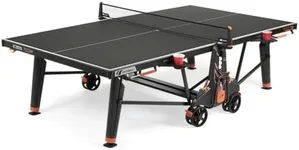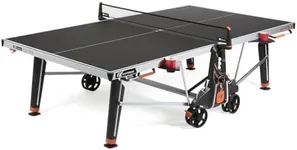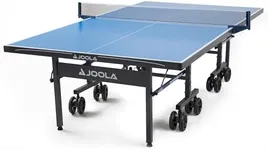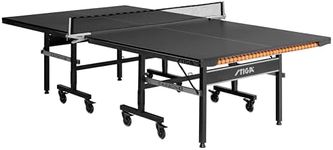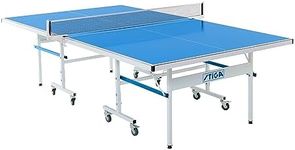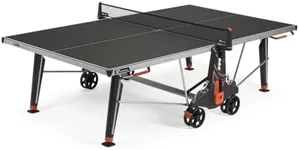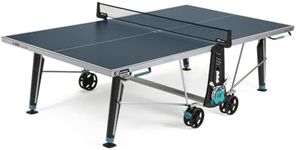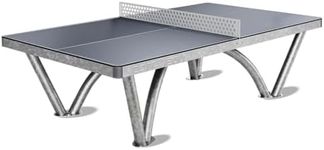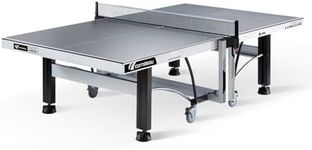Buying Guide for the Best Outdoor Ping Pong Tables
Buying an outdoor ping pong table is a great idea if you enjoy playing table tennis and want something durable that can handle being outside. Unlike indoor tables, outdoor tables are built to withstand the elements like sun, rain, and wind. When you’re choosing, think carefully about where the table will sit, how often it’ll be used, and who will play. Picking the right table means looking at things like the material, thickness, and other features that make playing enjoyable and safe. The goal is to find a table that lasts, plays well, and fits your space and usage.Tabletop MaterialTabletop material refers to the kind of surface the ping pong ball will bounce on. This is important because outdoor tables need to resist water and sun damage. Most are made from materials like aluminum, melamine, or composite. Aluminum tables are lightweight and rust-resistant, which is great for wet areas, but can have a slightly different bounce than wood. Composite and melamine tables are often heavier but can provide a truer bounce and last even longer. If you want the highest outdoor durability, pick a table with a weatherproof surface. Think about your local climate—if it's very wet or sunny, prioritize weather-resistant materials.
Table ThicknessThe thickness of the table affects how the ball bounces. Thicker surfaces, usually measured in millimeters, give a more consistent and satisfying bounce, which is especially important if you want the game to feel like playing on an indoor table. Outdoor tables usually have thickness ranging from about 4mm to 8mm or more. Thinner tables (4-5mm) are lighter and easier to move, but may not play as well. Thicker tables (6-8mm+) usually offer better play quality but are heavier. If your main use is casual family games, a medium thickness is likely enough. If you’re more serious or want a 'real' play feel, look for the thicker options.
Frame and Leg ConstructionThe frame and leg construction refers to how strong and stable the table is. This part is crucial outdoors because wind and uneven ground can make flimsy tables wobble or sag. Tables with steel or aluminum frames are strong, and thicker legs with broad feet offer more stability, especially on grass or patios. Adjustable legs help balance the table if your ground is uneven. Lighter frames are easier to move but might not be as robust. Consider how windy your area is and whether the table will stay in one place or need to be stored often.
Net SystemThe net system is the setup that holds the net tight and upright on the table. Outdoor nets should be weatherproof too, often made from synthetic materials rather than traditional string or cloth. Some tables come with permanent fixed nets, while others have clip-on or screw-on types. Fixed nets are easier to use and harder to lose, but may get in the way when folding the table for storage. If you'll pack up the table regularly, check that the net is easy to remove and resists sun and water damage.
Portability and StoragePortability and storage refer to how easily the table moves and folds up. Look for features like wheels (preferably with locks), folding halves, and handles. If you’ll be moving the table a lot—maybe bringing it in whenever not in use—wheels and easy folding are very important. For more permanent setups, this matters less. Some tables fold for solo play, letting one half stand up for hitting practice. Think about how much space you have and whether you’ll need to put the table away between games.
WeatherproofingWeatherproofing is the table's ability to handle rain, sun, and sometimes snow. This involves rust-resistant hardware, sealed surfaces, and sometimes UV protection. A good outdoor ping pong table will specifically mention water resistance and anti-corrosion features. If you live in a climate with lots of harsh weather, prioritize these points so your table won’t warp, rust, or fade. If it’ll be under a shelter, you can be a bit more flexible. Always consider using a good cover when not in use as extra protection.

